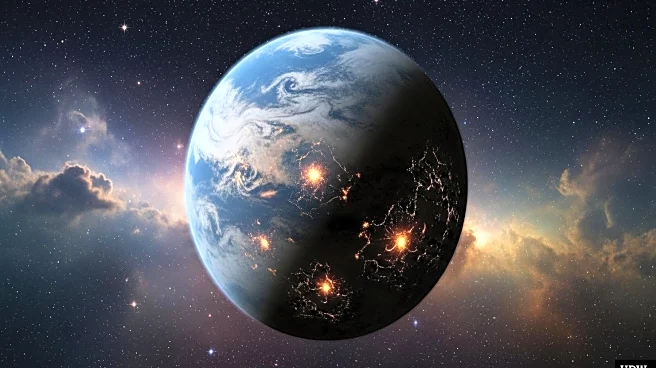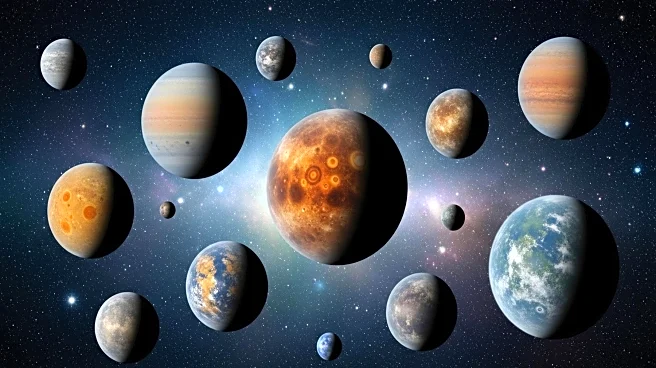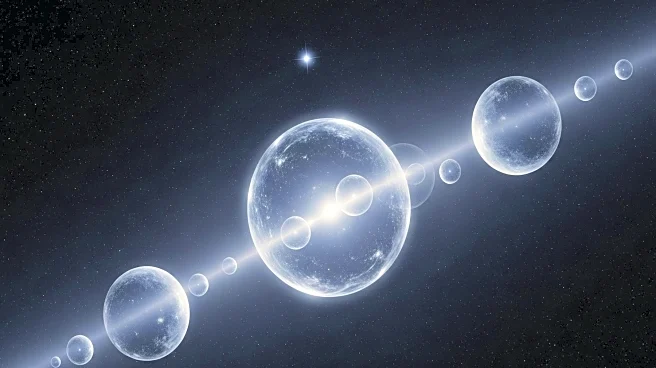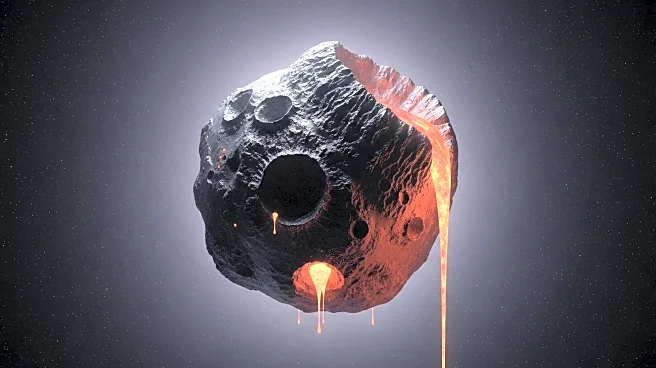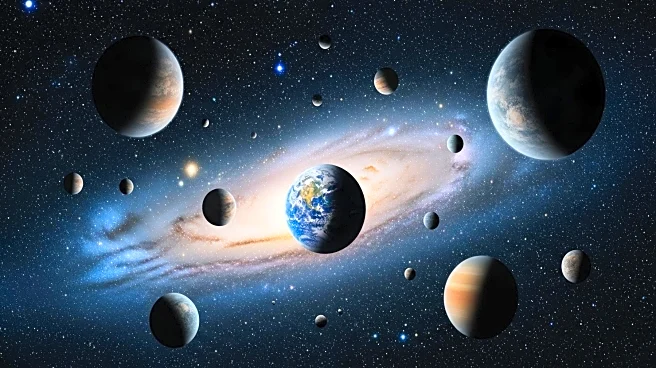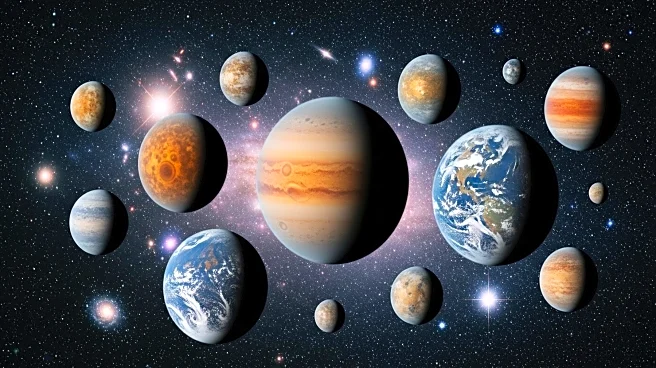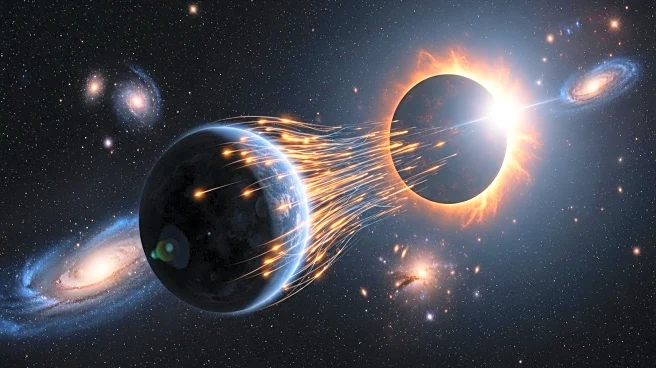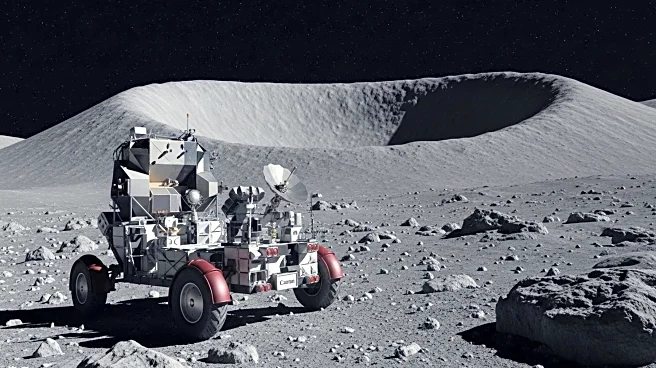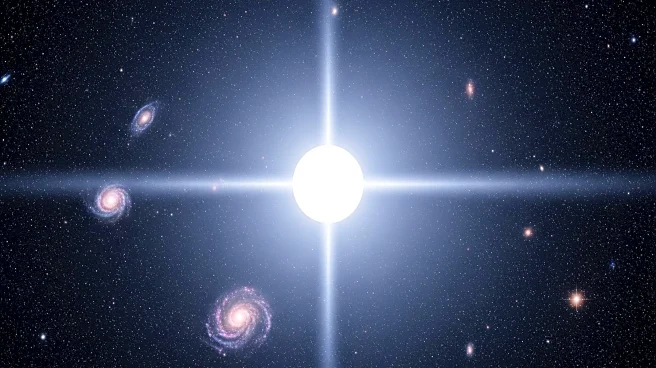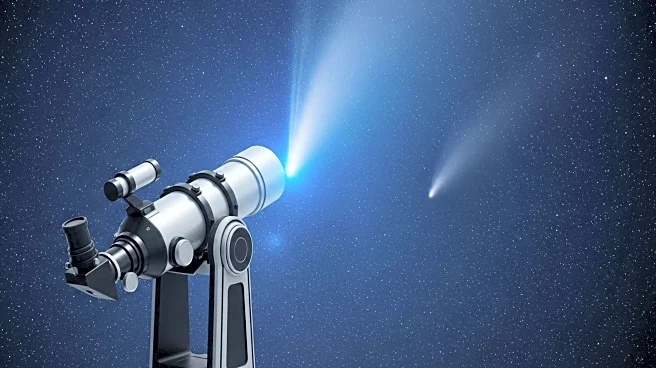What's Happening?
TOI-4507 b, an exoplanet located approximately 578 light-years from Earth, is challenging established planetary norms due to its unique characteristics. Classified as a 'super-puff,' this planet is nine times wider than Earth but only 30 times its mass, making it as wide as Jupiter but significantly lighter. It orbits a young star, just 700 million years old, in a nearly polar orbit, completing a revolution every 105 days. Despite its large size, TOI-4507 b's low density and extended atmosphere are not attributed to tidal heating, as it is too far from its star for such heating to be significant. Researchers speculate that the planet's unusual features may be due to past dramatic events or the presence of large ring systems.
Why It's Important?
The discovery of TOI-4507 b is significant as it challenges existing theories about planetary formation and behavior. Its classification as a 'super-puff' with an extended atmosphere raises questions about the processes that lead to such characteristics. Understanding these anomalies can provide insights into the diversity of planetary systems and the factors influencing their development. This knowledge is crucial for refining models of planetary formation and evolution, potentially impacting future astronomical research and exploration strategies.
What's Next?
Researchers are continuing to study TOI-4507 b to uncover the mysteries surrounding its formation and characteristics. Further observations and data collection from telescopes like NASA's Transiting Exoplanet Survey Satellite and ASTEP are expected to provide more insights. The scientific community is likely to explore the possibility of other planets with similar features, which could lead to a broader understanding of 'super-puff' planets and their role in the universe.
Beyond the Headlines
The study of TOI-4507 b may have implications for the search for habitable planets. Understanding the conditions that lead to extended atmospheres could inform the criteria used to identify planets capable of supporting life. Additionally, the planet's unique orbit and characteristics may offer clues about the dynamics of planetary systems and the potential for life in environments previously considered inhospitable.
